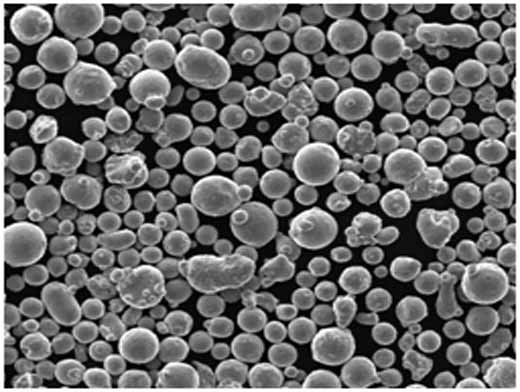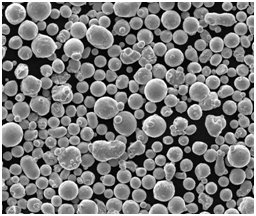Vue d'ensemble Poudre CuZn40
La poudre CuZn40, également connue sous le nom de poudre de laiton avec une composition de 60% de cuivre et 40% de zinc, est un alliage polyvalent largement utilisé dans les industries allant de la fabrication aux applications décoratives. Connue pour sa résistance à la corrosion, sa maniabilité et sa couleur dorée attrayante, la poudre CuZn40 joue un rôle essentiel dans diverses applications techniques, industrielles et artistiques. Cet article examine en profondeur les propriétés, les applications, les modèles spécifiques, les fournisseurs, etc. pour vous aider à comprendre pourquoi la poudre CuZn40 est si appréciée.
Qu'est-ce que la poudre CuZn40 ?
CuZn40, un type d'alliage de laiton, est une poudre métallique composée de cuivre (Cu) et de zinc (Zn) dans un rapport de 60/40. Il est reconnu pour son équilibre entre la solidité, la malléabilité et la résistance à la corrosion, ce qui le rend idéal pour les applications qui exigent à la fois formabilité et durabilité. Comparé au cuivre pur, le CuZn40 offre une combinaison unique d'avantages - sa teneur en zinc améliore la dureté et la résistance à la traction tout en conservant une excellente usinabilité.

Types de poudre CuZn40 : modèles et descriptions spécifiques
Le tableau ci-dessous présente différents modèles de poudre CuZn40, chacun adapté à des applications spécifiques. Ces modèles varient en fonction de la taille des particules, de la pureté, des processus de fabrication et des éléments d'alliage supplémentaires.
| Modèle | Taille des particules | Composition | Caractéristiques principales | Meilleures applications |
|---|---|---|---|---|
| CuZn40-P100 | 100 µm | 60% Cu, 40% Zn | Grande pureté, finition lisse | Revêtements décoratifs, œuvres d'art |
| CuZn40-P200 | 200 µm | 60% Cu, 40% Zn | Résistance accrue | Pièces automobiles, accessoires de plomberie |
| CuZn40-FP (poudre fine) | 30 µm | 60% Cu, 40% Zn | Surface élevée | Métallurgie des poudres, fabrication additive |
| CuZn40-SG (qualité sphérique) | 75 µm | 60% Cu, 40% Zn | Particules sphériques pour un écoulement fluide | Frittage laser, impression 3D |
| CuZn40-A (atomisé) | 150 µm | 60% Cu, 40% Zn | Particules atomisées et uniformes | Contacts électriques, brasage |
| CuZn40-LT (frittage à basse température) | 80 µm | 60% Cu, 40% Zn | Température de frittage plus basse | Applications de brasage à basse température |
| CuZn40-HF (Haut débit) | 90 µm | 60% Cu, 40% Zn | Débit élevé | Pièces de précision, revêtements denses |
| CuZn40-NP (Nano poudre) | <10 µm | 60% Cu, 40% Zn | Réactivité élevée due à l'échelle nanométrique | Catalyseurs, applications électroniques avancées |
| CuZn40-HP (haute pureté) | 100 µm | Pureté de 99,9%, impuretés minimales | Applications nécessitant une contamination minimale | Electronique haut de gamme, instruments de précision |
| CuZn40-CR (résistant à la corrosion) | 125 µm | 60% Cu, 40% Zn, avec de faibles ajouts de Cr | Résistance accrue à la corrosion | Applications marines, matériel d'extérieur |
Composition et propriétés des Poudre CuZn40
Composition de la poudre CuZn40
La poudre CuZn40 est précisément équilibrée entre le cuivre et le zinc, ce qui permet d'obtenir un alliage alliant résistance et ductilité. Voici sa composition élémentaire :
| Élément | Pourcentage |
|---|---|
| Cuivre (Cu) | 60% |
| Zinc (Zn) | 40% |
| Autres éléments | Impuretés minimales |
Caractéristiques de la poudre CuZn40
Les propriétés de la poudre CuZn40 la rendent idéale pour une large gamme d'utilisations industrielles. Voici quelques-unes de ses principales caractéristiques :
| Propriété | Description |
|---|---|
| Résistance à la corrosion | Excellent dans les environnements non acides ; idéal pour les applications extérieures |
| Ductilité | La ductilité élevée permet un travail à froid sans fissure. |
| Conductivité thermique | Bonne conduction de la chaleur, convient aux systèmes d'échange de chaleur |
| Usinabilité | Plus facile à usiner que le cuivre pur |
| L'attrait esthétique | Couleur semblable à l'or pour les applications décoratives |
Applications de la poudre CuZn40 dans diverses industries
La poudre CuZn40 trouve des applications dans divers secteurs en raison de sa polyvalence. Voici un tableau des principales applications :
| L'industrie | application | Avantages |
|---|---|---|
| Fabrication | Composants tels que les soupapes, les engrenages et les bagues | Grande solidité et résistance à l'usure |
| Automobile | Injecteurs de carburant, noyaux de radiateur | Résistance à la corrosion, usinabilité |
| Électronique | Connecteurs, bornes | Conductivité électrique et durabilité |
| Art et décoration | Sculptures, revêtements métalliques | Finition attrayante, facile à façonner |
| La construction | Accessoires de plomberie, fixations | Non corrosif et durable pour une utilisation en extérieur |
| Aérospatiale | Pièces soumises à de fortes contraintes | Léger avec un excellent rapport résistance/poids |






Spécifications, tailles, qualités et normes de la poudre CuZn40
Lors de la sélection de la poudre CuZn40, il convient de tenir compte des spécifications suivantes :
| Spécifications | Range | Importance |
|---|---|---|
| Taille des particules | 10 µm - 200 µm | Détermine l'aptitude à l'application (par exemple, particules plus fines pour les revêtements) |
| La pureté | 99.5% – 99.9% | Une plus grande pureté pour les applications critiques telles que l'électronique |
| Notes | Standard, haute pureté, nano | Varie en fonction des besoins de résistance ou de conductivité |
| Normes | ASTM, ISO, SAE | Veiller à la conformité avec les exigences du secteur |
Avantages et inconvénients de la poudre CuZn40 par rapport aux autres poudres de laiton
CuZn40 présente à la fois des avantages et des limites. Comparons-le à d'autres poudres de laiton en termes de performances clés.
| Fonctionnalité | CuZn40 | CuZn30 | CuZn20 |
|---|---|---|---|
| Teneur en cuivre | 60% | 70% | 80% |
| La force | Haut | Moyen | Plus bas |
| Résistance à la corrosion | Bon | Très bon | Excellent |
| Usinabilité | Plus facile à usiner | Plus difficile à usiner | Plus difficile à usiner |
| Coût | Modéré | Plus élevé | Le plus élevé |
| Apparence | Or brillant | Doré | Or clair |
Informations sur les fournisseurs et les prix
Pour ceux qui souhaitent acheter Poudre de CuZn40Voici un aperçu de quelques fournisseurs réputés et de leurs prix approximatifs.
| Fournisseur | Localisation | Options du modèle | Fourchette de prix (USD/kg) |
|---|---|---|---|
| ABC Metals | ÉTATS-UNIS | P100, FP, SG | $10 – $30 |
| Poudres métalliques mondiales | L'Europe | HP, CR, NP | $15 – $40 |
| MetallurgyPro | Asie | LT, A, HF | $12 – $35 |
| Solutions Powder Tech | ÉTATS-UNIS | Standard, haute pureté | $14 – $32 |
FAQ
| Question | Réponse |
|---|---|
| À quoi sert la poudre CuZn40 ? | La poudre CuZn40 est principalement utilisée dans les pièces automobiles, l'électronique, les composants de fabrication et les applications décoratives. |
| En quoi la poudre CuZn40 est-elle différente des autres poudres de laiton ? | Il présente un rapport cuivre/zinc de 60/40, offrant un mélange équilibré de solidité, de ductilité et de résistance à la corrosion. |
| La poudre CuZn40 peut-elle être utilisée pour l'impression 3D ? | Oui, le CuZn40 en qualité fine ou sphérique est idéal pour les applications d'impression 3D et de frittage laser. |
| Quels sont les facteurs de coût de la poudre de CuZn40 ? | Le coût dépend de la pureté, de la taille des particules et du fournisseur. Les prix varient de $10 à $40 par kilogramme. |
| La poudre CuZn40 est-elle résistante à la corrosion ? | Oui, il fonctionne bien dans des environnements non acides, ce qui le rend adapté à de nombreuses applications extérieures. |

